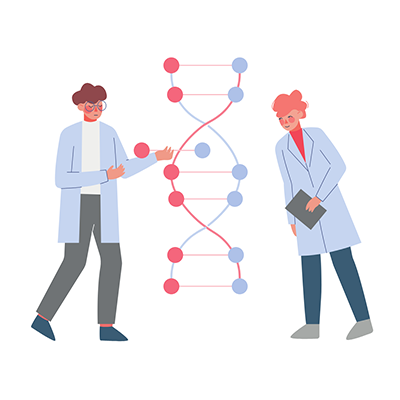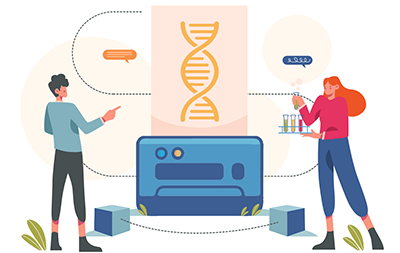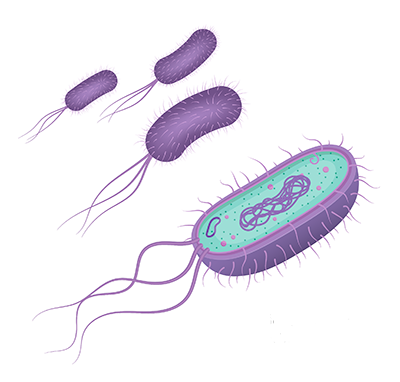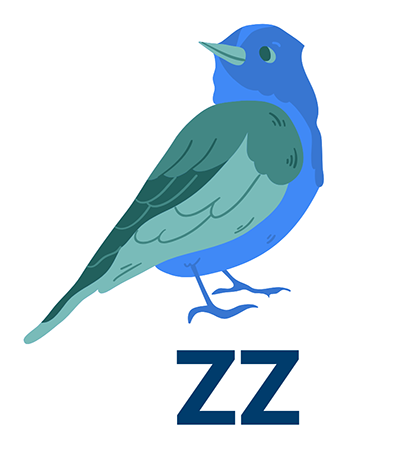Campus News
10 mysteries of the Y chromosome
Researchers have just completed the first full sequence of a Y chromosome — what will we learn?

The Telomere-to-Telomere (T2T) consortium, co-led by UC Santa Cruz Genomics Institute Associate Director Karen Miga and National Institutes of Health Genomics Research Institute Senior Investigator Adam Phillippy, has just completed the first sequencing of a full human Y chromosome!
The Y chromosome is one of the smallest of the 46 human chromosomes, but it has been the most difficult for researchers to read. Until recently, more than half of it was unassembled. Having the full code for this unique chromosome could help unlock at least a few of its many mysteries.
Here are ten questions about the Y chromosome, and the answers we have so far:
1. Why is it called the Y chromosome?
Contrary to popular belief, the Y chromosome is not shaped like the letter Y!
The X chromosome was discovered first and given the name “X” because that is the traditional mathematical symbol for unsolved. When the Y chromosome was discovered about 15 years later, researchers just continued on with the alphabet.
All chromosomes have roughly the same shape, but the Y chromosome is smaller in size — about a third of the size of the X chromosome.
2. What can the Y chromosome tell me about my ancestry? 
Y chromosome inheritance is very unique. All other human chromosomes, including the X chromosome, recombine and share genetic material during reproduction, but the Y chromosome is passed along directly from parent to child with very little recombination.
Because of this direct inheritance, being able to fully sequence different people’s Y chromosomes will help us better understand how genes are inherited and change across generations.
Already, many popular genetic ancestry services like 23 and Me and FamilyTreeDNA provide a specific report on the Y chromosome because its unique inheritance allows these companies to place people in specific “haplogroups” – groups of people who have shared mutations in their DNA that show that they are likely descended from a common ancestor. Researchers have been able to trace what geographic regions many of these haplogroups originated in, giving people some idea of their ancestral origins.
3. What are DNA palindromes and why is the Y chromosome full of them?
Like all human DNA, the human Y chromosome sequence is spelled out in A,T,C, and G base pairs, but the Y chromosome is unique in that it is full of palindromes — sequences of letters that are the same backward and forward, like kayak or racecar. The genes that are coded in palindrome-heavy regions help control important functions, such as the creation of sperm.
The palindromic structure creates “pairs” of genes, and some scientists think these could be a sort of backup to “repair” a copy if it acquires a harmful mutation.
4. What made the Y chromosome so difficult to sequence? 
Until recently, sequencing and assembling full DNA palindromes was an expensive and labor-intensive process that had only been done once before. Now that we have found a way to assemble them more affordably and reliably, it could open the door for future studies of Y-chromosome-related fertility.
As difficult as palindromes were to sequence, however, they were not the biggest challenge the sequencing consortium had. One of the arms of the Y chromosome has large regions of what is known as “satellite DNA,” or highly repetitive DNA regions, that proved impossible to accurately sequence until now. Satellite regions on the Y can vary greatly in length between individuals, but what they do is a huge mystery. Having the satellites sequenced brings us one step closer to understanding them better.
5. Why do some people have more copies of Y chromosome genes than others?
The Y chromosome is the fastest changing chromosome in humans, and even among all apes. This means two healthy people’s Y chromosomes can look very different.
In two individuals with Y chromosomes, one could have 19 copies of a gene on the Y chromosome while the other could have 40. Nobody knows exactly why this happens or how it may impact processes in the body — yet.
Hopefully the new fully sequenced Y chromosome reference will help scientists figure out why these differences exist. The answers could help us better understand conditions like infertility.
6. What can the Y chromosome tell us about bacteria?
This may sound like a strange question, but the answer is actually a whole lot.
Many bacterial samples are taken from swabs on humans, so they contain human contamination. When sequencing these bacterial samples, researchers have looked for snippets of sequences that match the pieces of the human reference genome in order to remove this contamination. Because we did not know the sequence for over half of the Y chromosome, however, sections of Y chromosome have been mistaken as bacteria genomes.
Researchers found that as many as 5,000 bacterial genomes in a common database likely contained contamination matching human Y sequences.
Being able to better understand bacterial DNA could have huge implications for medicine, because the human body is full of microorganisms. Bacterial sequences have been used in research on everything from gut health to cancer.
7. Why does the Y chromosome sometimes disappear as we age?
Many people have been observed to lose the Y chromosome from some of their blood cells as they age. Scientists are just beginning to unpack why, and the health implications this may have. So far experts have seen a connection to detrimental effects such as cardiac conditions, but other impacts are unknown. The complete Y chromosome sequence could help propel research on this important mystery.
8. Could the Y chromosome ever completely disappear?
By comparing the Y chromosome in humans to that of other mammals, some researchers have proposed that over millions of years of evolution, the Y chromosome has slowly been losing genes. It has been theorized that over a long enough period of time, the Y chromosome could disappear entirely. This theory is highly controversial in the scientific community, but even if the Y chromosome did disappear, it wouldn’t necessarily mean the end of sexual differentiation — some rodent species lack a Y chromosome, but they still have differentiated sexual characteristics like ovaries and testes.
9. What genes does the Y chromosome code for?
The Y chromosome contains some very complex genes that code for important sexual functions like the creation of sperm. In fully sequencing the Y chromosome, researchers have also found 41 additional protein-coding genes. Some of these genes might be related to sexual characteristics, but others might not be. Although the Y chromosome contains SRY, an important sex-determining gene, other genes related to sexual characteristics are scattered throughout the rest of the genome, and genes on the sex chromosomes sometimes have non-sex-related functions. For example, the X chromosome contains the largest number of immune health-related genes in the human genome, and recent work demonstrates that some genes on the Y chromosome contribute to cancer risk and severity.
10. Who has a Y chromosome?
The Y chromosome is not just found in people assigned male at birth. Intersex people can have XX chromosomes, XY chromosomes, XXY, or even a mix of XX and XY in different cells of their body and present a spectrum of physical characteristics. The presence (or absence) of anatomy that has traditionally been labeled as “male” or “female” is not solid proof that an individual has a particular set of chromosomes.
In animals, things get even more complicated. Some rodents don’t have Y chromosomes at all, and both sexes have a single X. For several species of voles, a quarter of females mysteriously have XY chromosomes. Bird and reptile species have different chromosomes entirely, with ZW females and ZZ males.
Want more on the Y chromosome? Check out this fact sheet from the National Human Genome Research Institute.